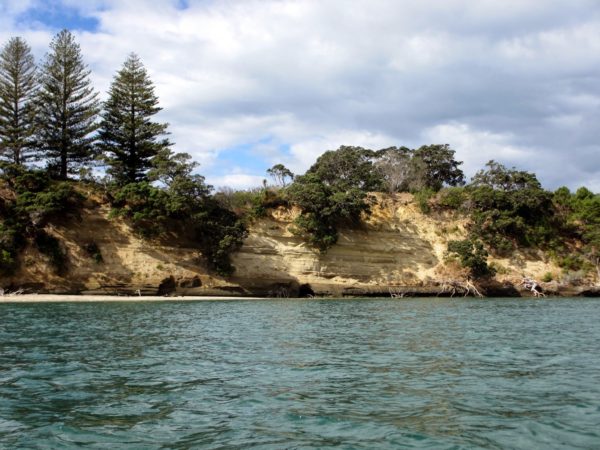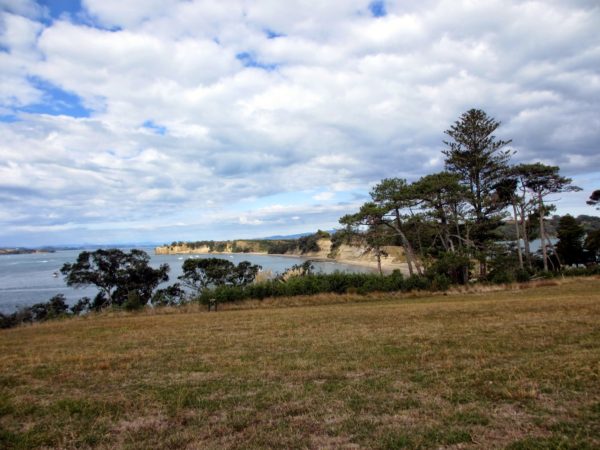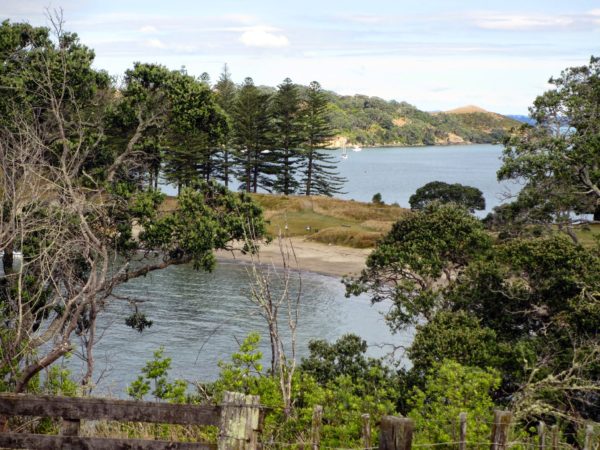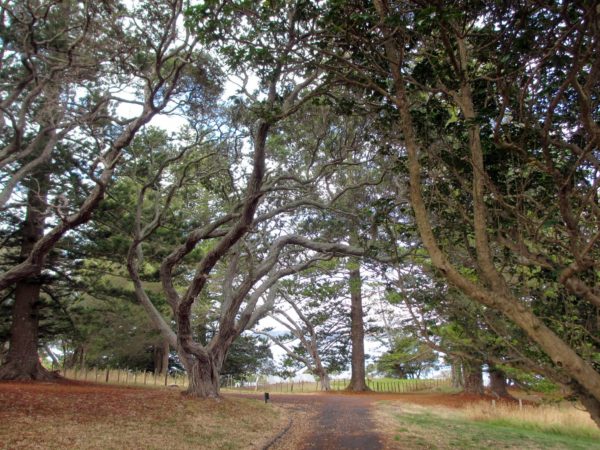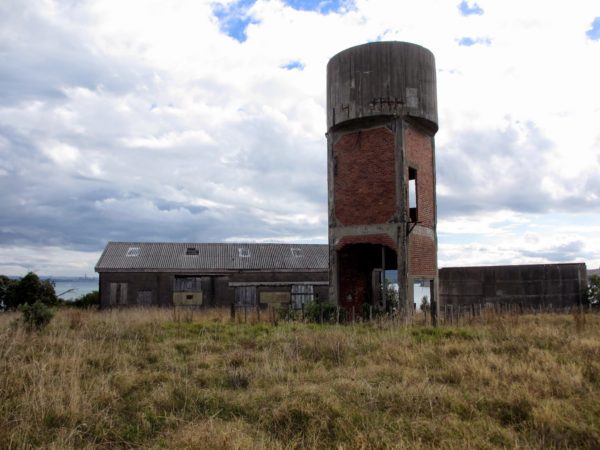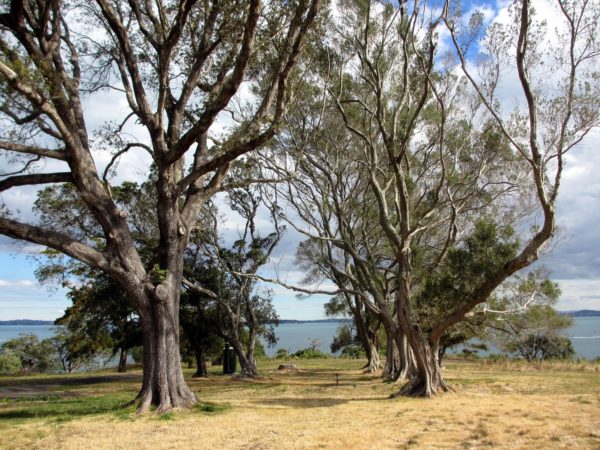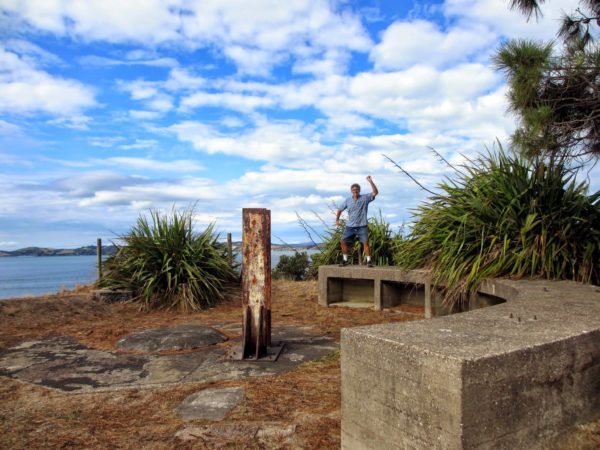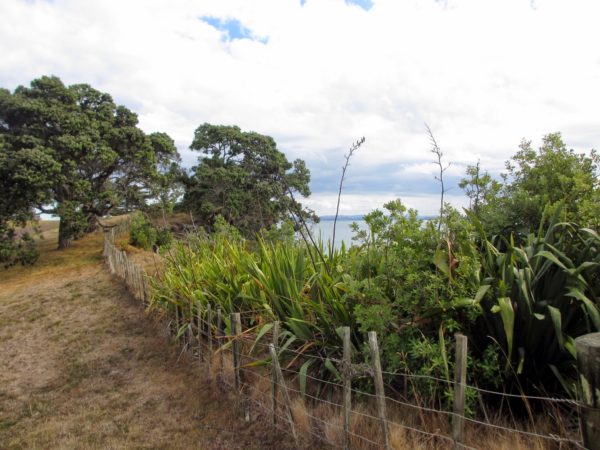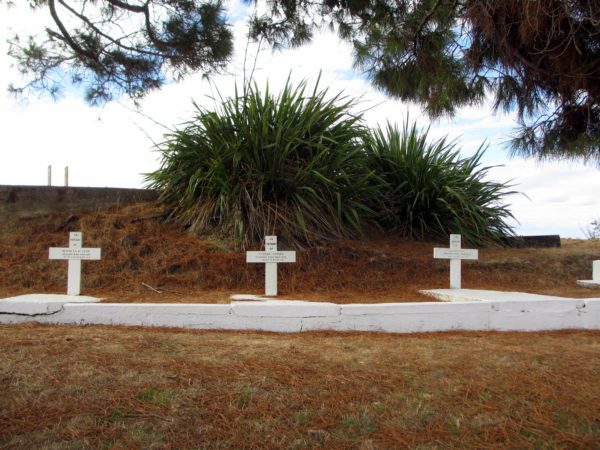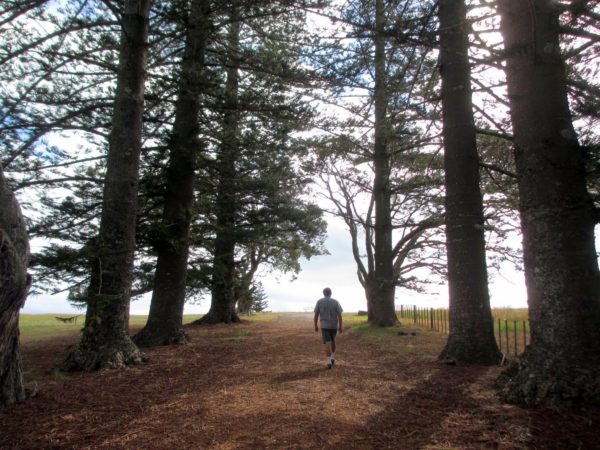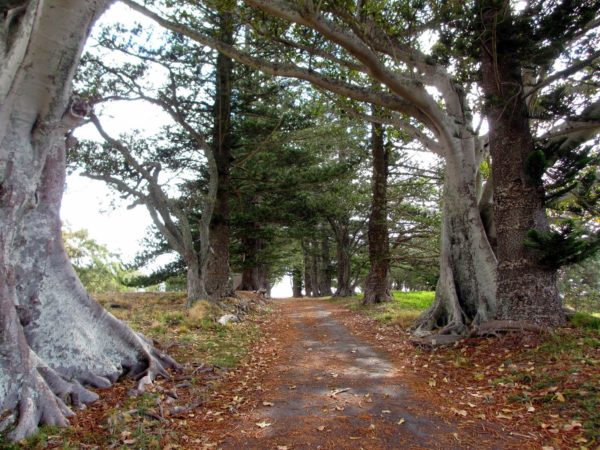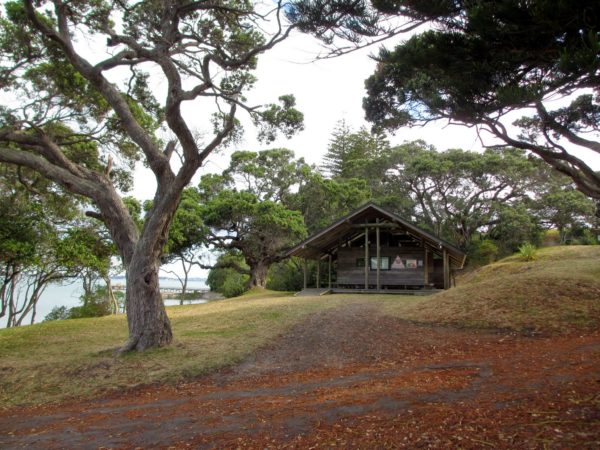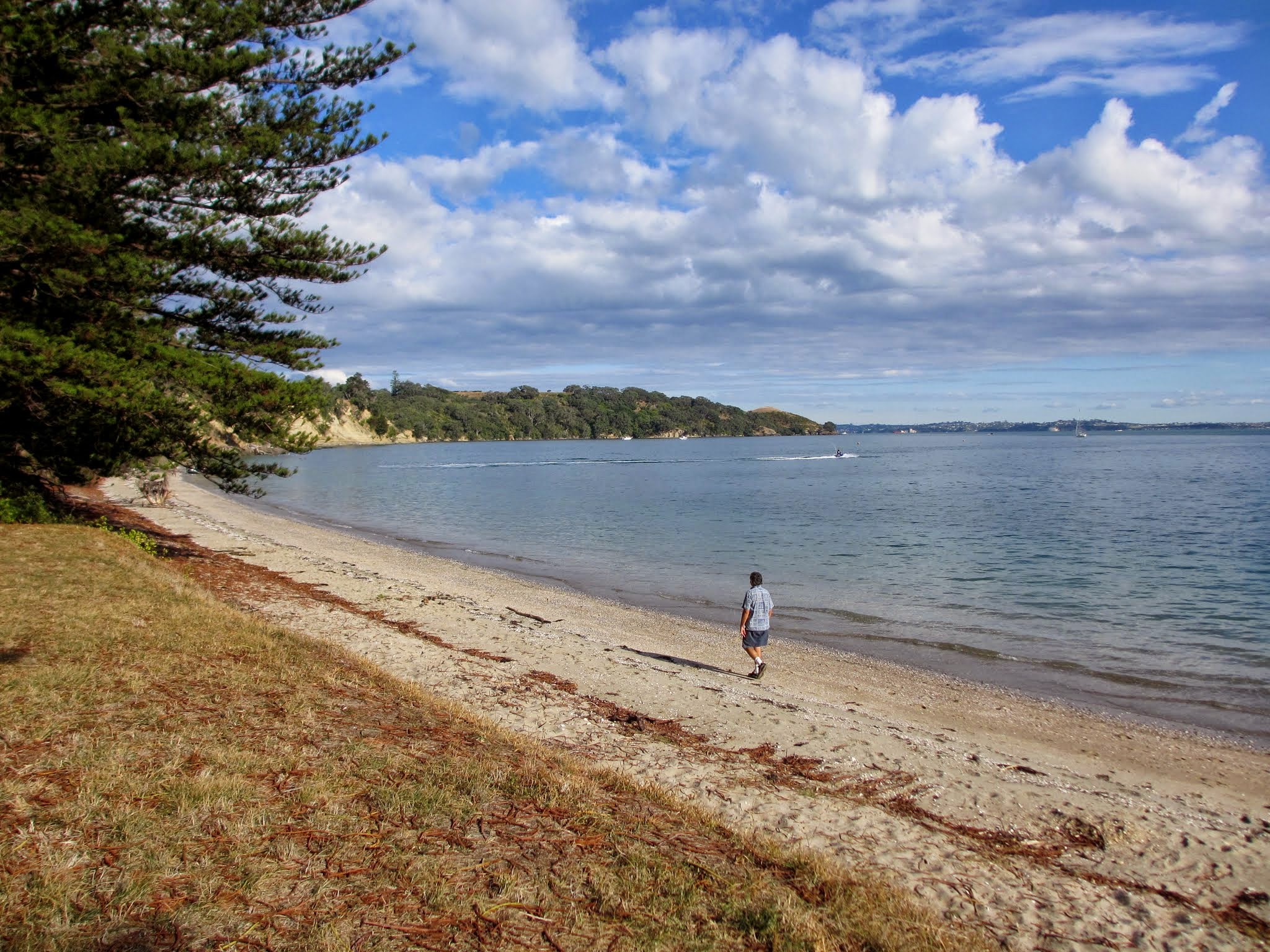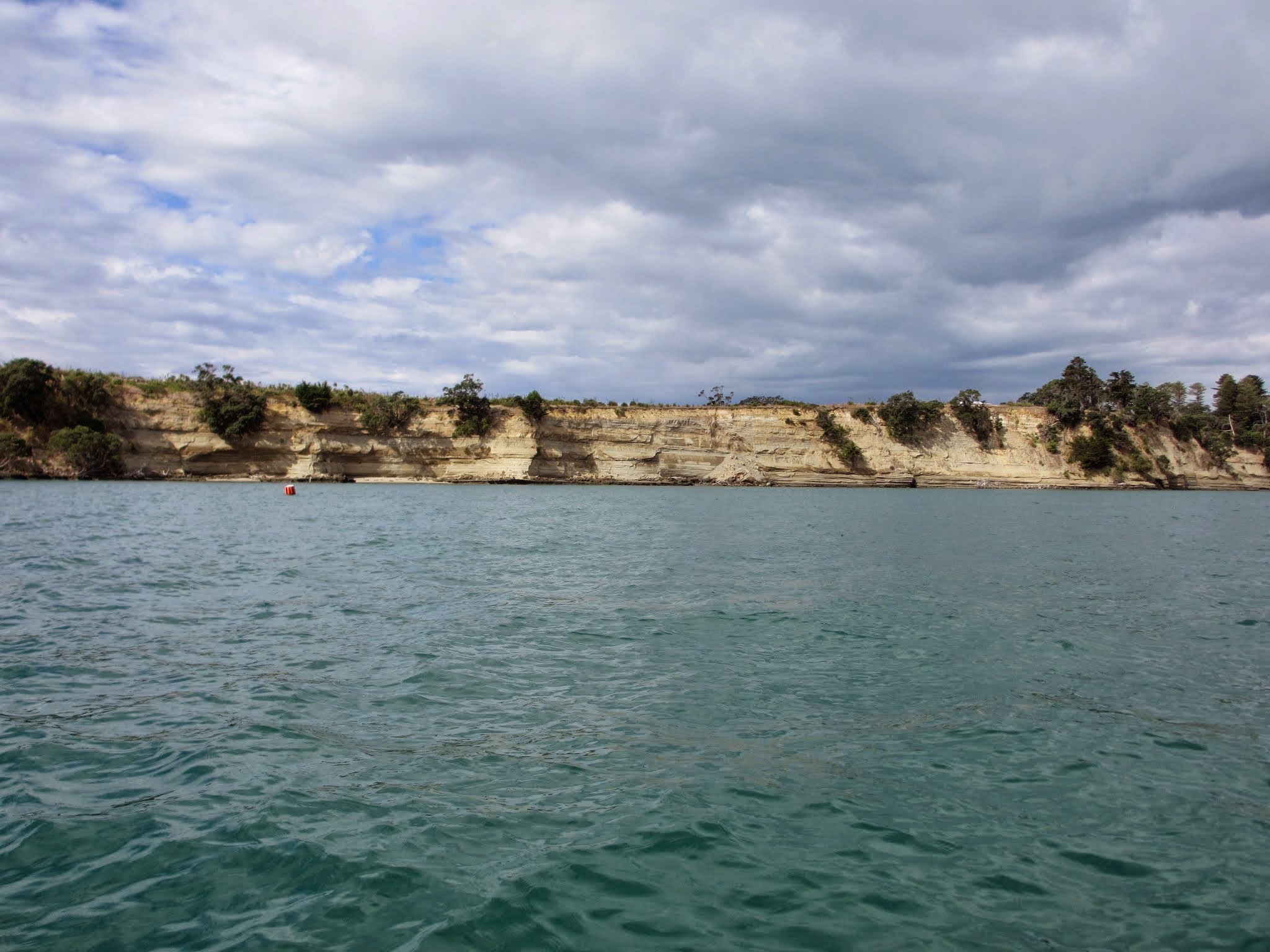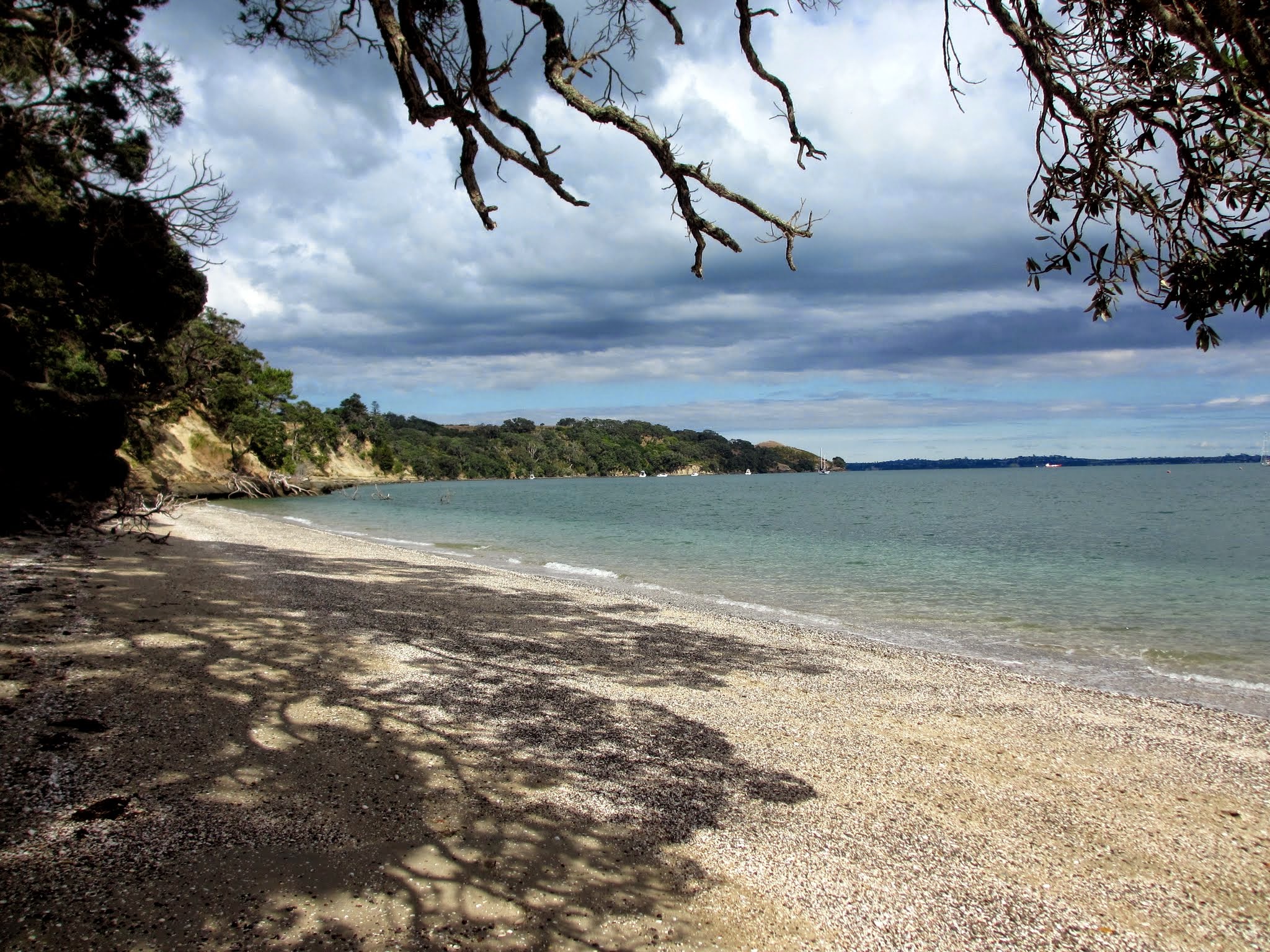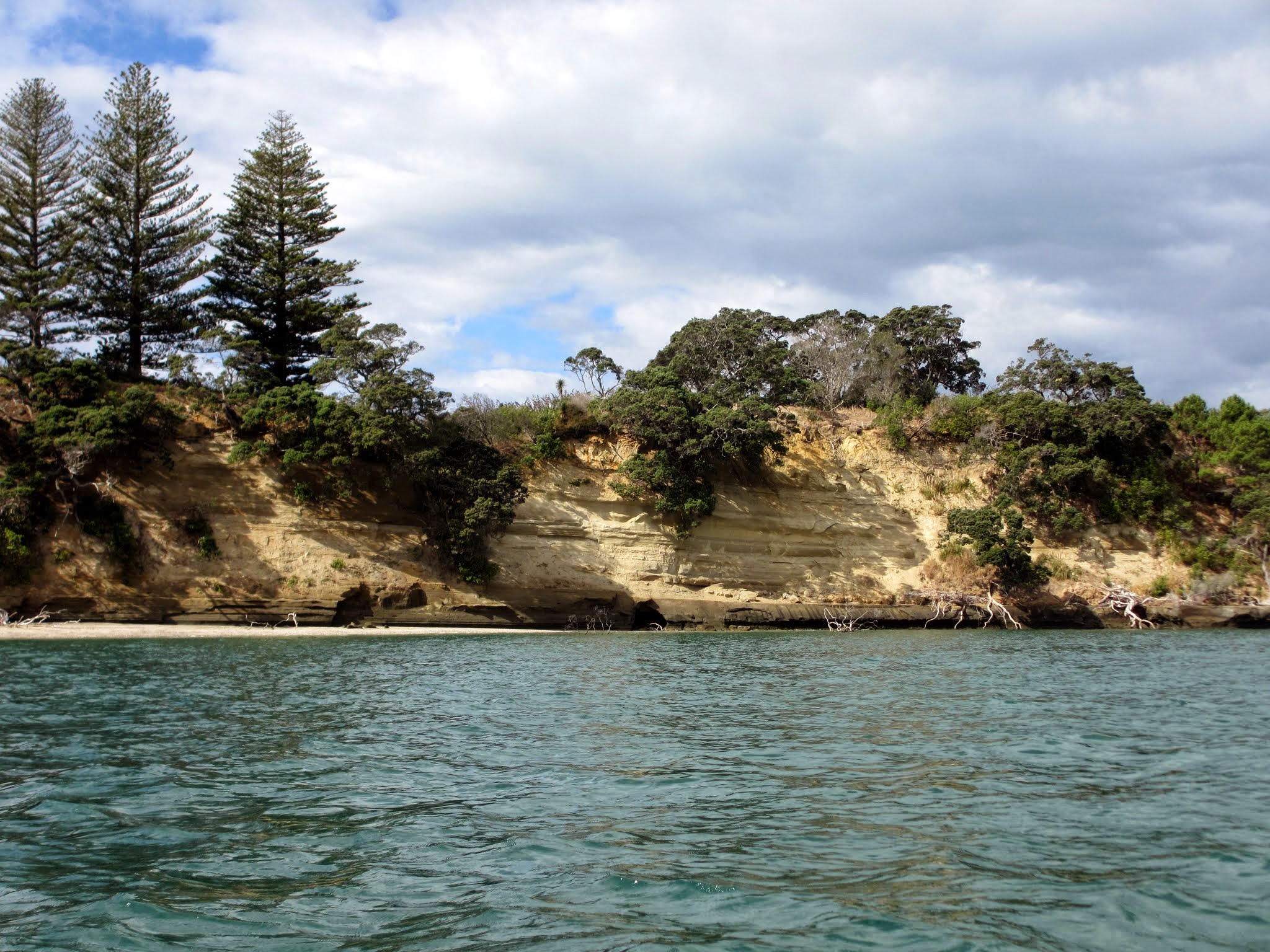April 7, 2013
Motuihe is a small island with an unusual shape. It’s about a mile across with a long skinny arm that reaches out to a knob of land at its northwest end. Along the length of the arm are two good anchorages: Takutairaroa Bay which faces northeast, and Waihaorangatahi Bay which faces southwest. Which one is best depends on the direction of the wind.
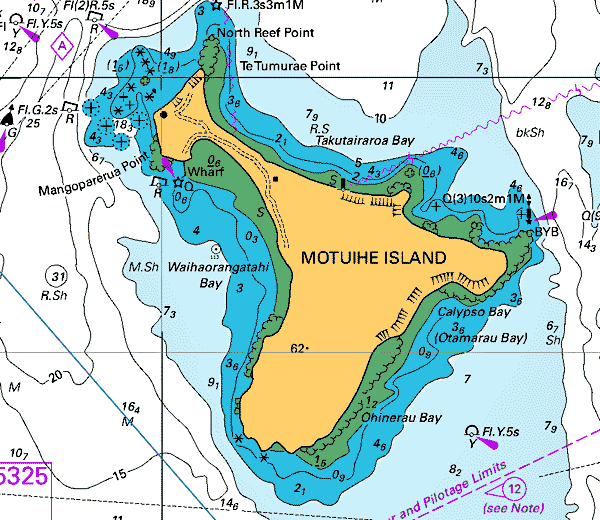
Because of the slight northerly winds, we picked Waihaorangatahi Bay on the south side. (Luckily you don’t have to be able to pronounce it to stay there.) This very tranquil place had few boats, but we soon noticed it was pretty rolly. Turns out the rolliness was caused by the ferries going back and forth from Auckland to nearby Waiheke Island. No wonder there were more boats at the north anchorage! We decided to stay put knowing the ferry traffic would end this evening.
We headed ashore to explore some of the island, starting with our beach and then the beach on the other side of the narrow, grassy isthmus. Both beaches were quite nice, but the north beach was a little wider and sandier.
Below is a gallery of both anchorages, including our south side anchorage at Waihaorangatahi Bay and the north side, Takutairaroa Bay.
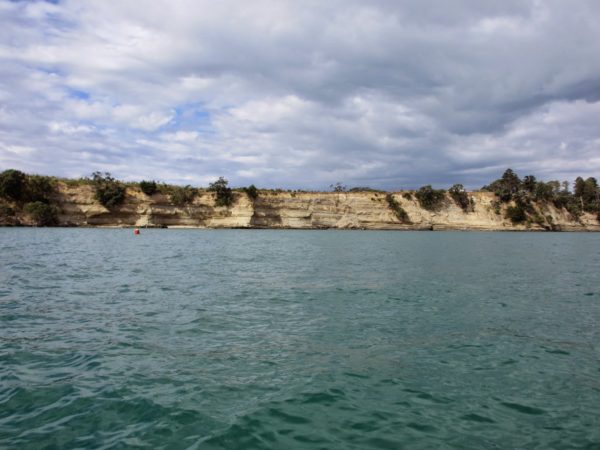
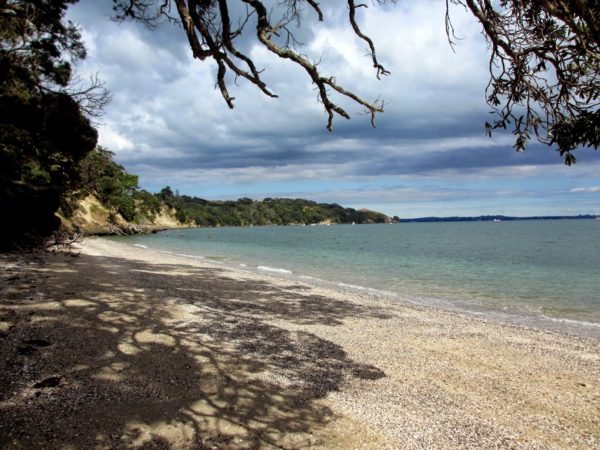
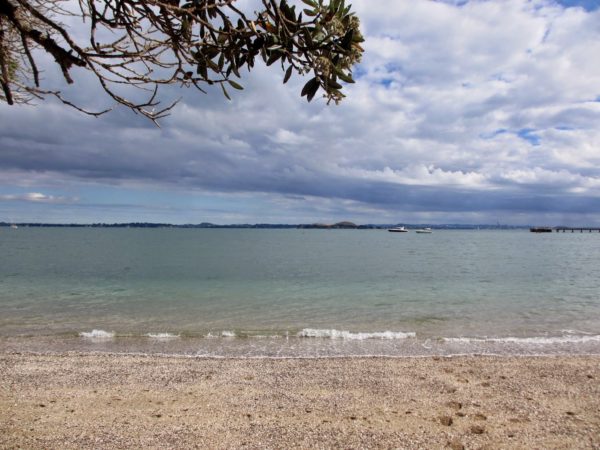
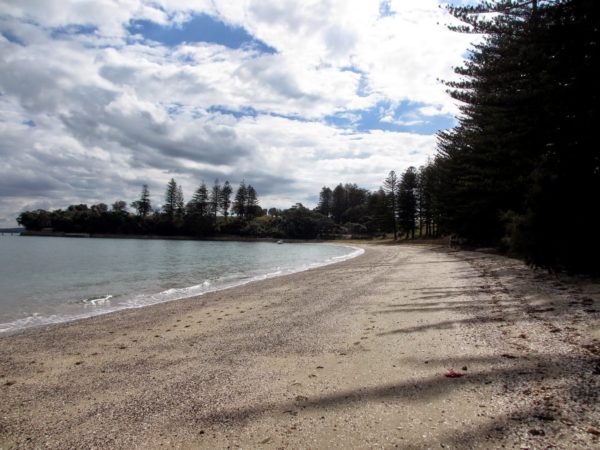
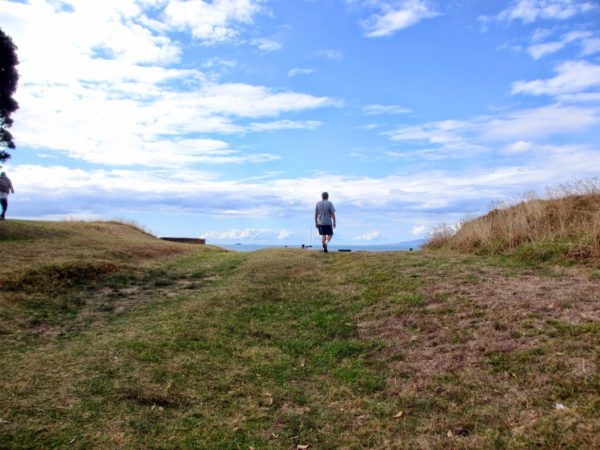
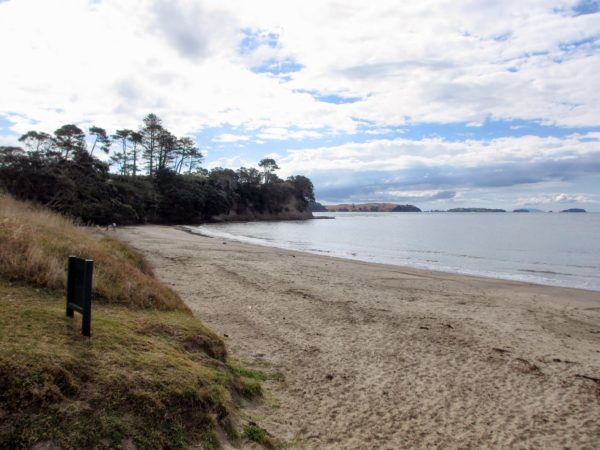
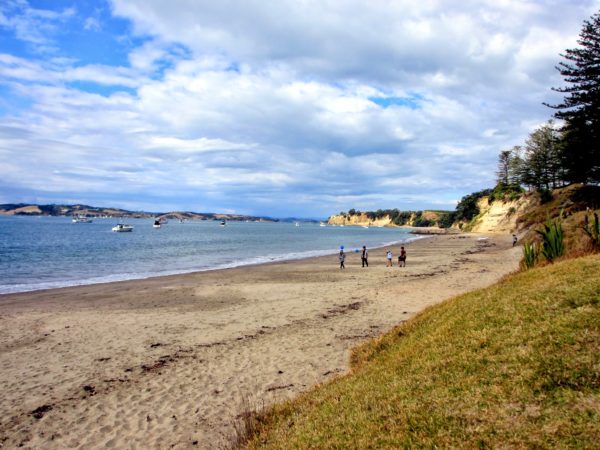

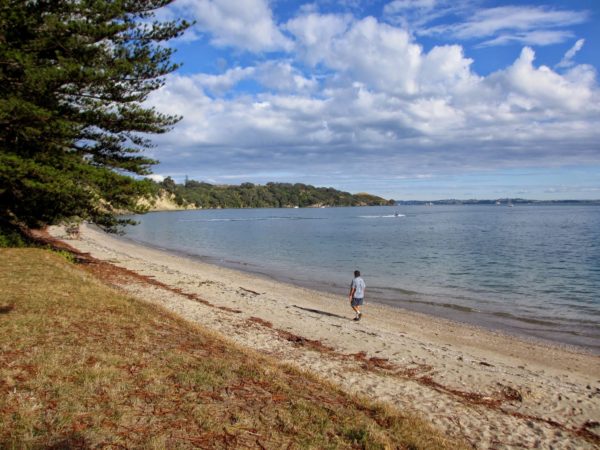
After we walked by the beaches, we headed over to the knob of land at the end of the arm. Yet again, we’d found an island that manages to have so many familiar elements in a totally unique combination. The path was lined with tall pine trees and a pair of gigantic rubber trees. Around us were little grassy hills and scattered trees. We knew this was a bird sanctuary island, and soon we spotted rosellas, colorful Australian parrots that now live in New Zealand, and kakarikis, New Zealand’s own green parrot. Pine trees, rubber trees, dry grassy slopes, and colorful parrots. You don’t see that every day.
We went out on the knob of land to visit a historical site. During the 1917 Spanish flu epidemic, victims were quarantined here. What remains of that sad time are the ruins of the isolation hospital and a small graveyard. We paid our respects then walked around the area which was quite beautiful. The combination of little grassy hills and large trees was striking. And like Rakino Island nearby, there was a prevailing sense of peace, calm and quiet around this island.
We continued our walk, going down a path to another area of the island, drier and grassier than the knob area, but very nice. Motuihe Island is beautiful place.
Below is a gallery of pictures from our afternoon at Motuihe island arranged in no particular order. I hope they convey the feeling of the place. As always, click to enlarge and scroll.–Cyndi
